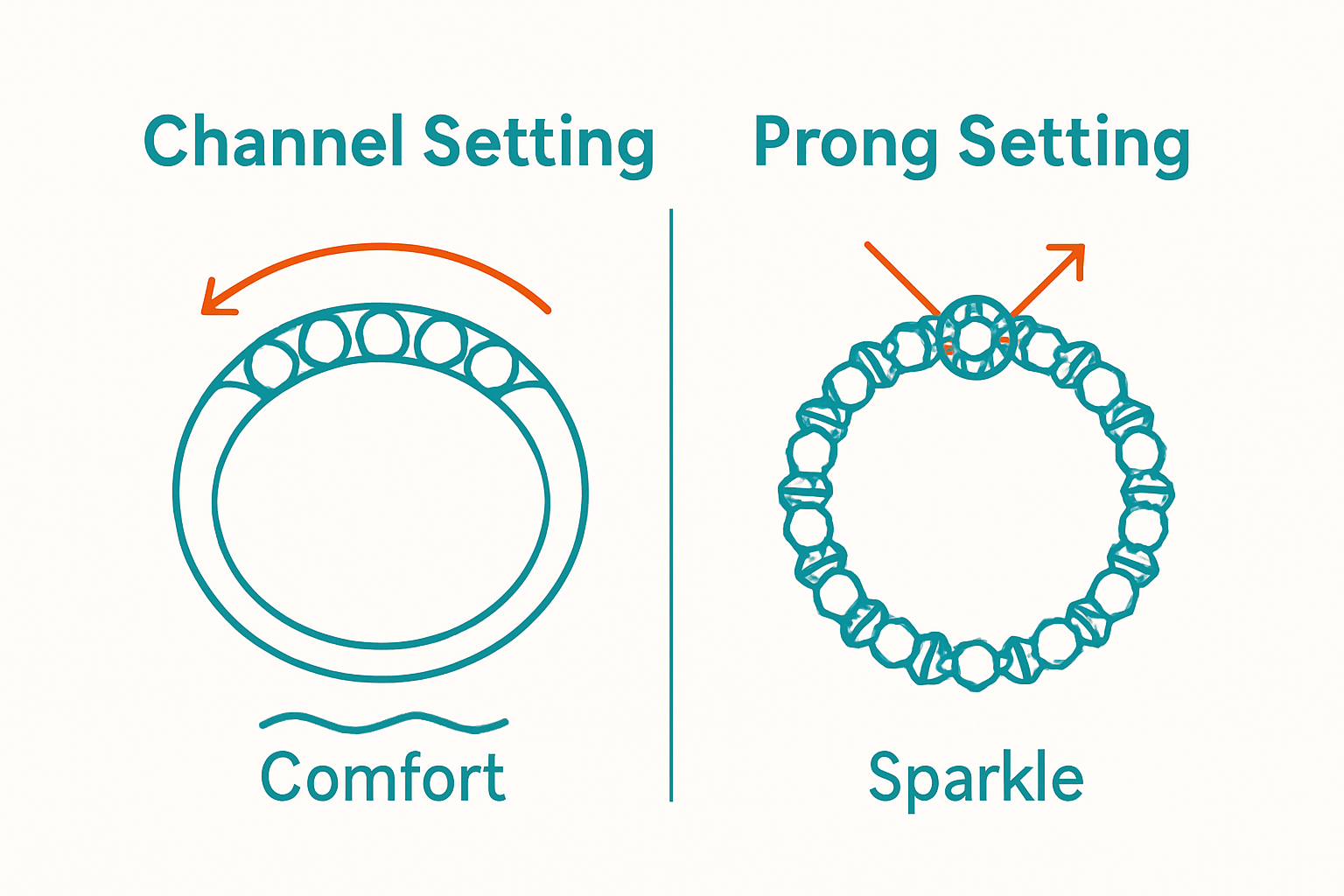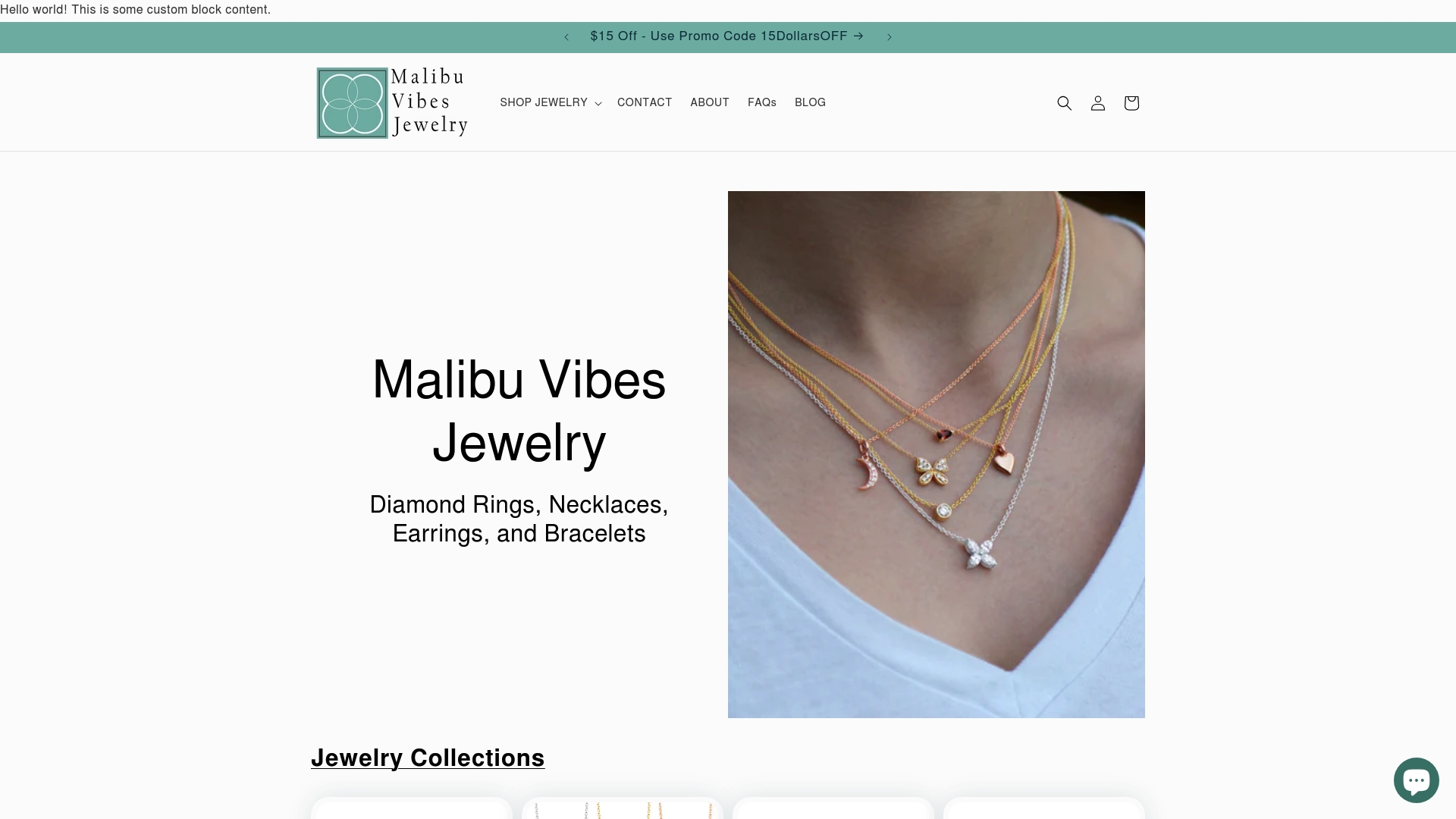Tennis bracelets have become one of the most recognizable pieces in the world of fine jewelry. With their origin tracing back to a dramatic moment at the 1987 US Open when Chris Evert’s diamond bracelet slipped off mid-match, these glittering accessories are steeped in both sporting history and style. You might expect a bracelet born from such high fashion to be reserved for black-tie events only. Actually, the tennis bracelet’s biggest surprise is its incredible versatility—seamlessly blending luxury with everyday comfort to create a timeless statement for any occasion.
Table of Contents
- Defining The Tennis Bracelet: What It Is And Its Features
- The Historical Significance Of Tennis Bracelets
- Why Tennis Bracelets Matter: Symbolism And Fashion
- Understanding The Design: Materials And Craftsmanship
- How To Choose A Tennis Bracelet: Key Considerations
Quick Summary
| Takeaway | Explanation |
|---|---|
| Tennis bracelets are defined by continuous gemstones. | They feature individually set diamonds or gemstones on a precious metal chain, ensuring elegance and flexibility. |
| Origin tied to Chris Evert’s 1987 match. | The bracelet gained fame after Evert’s incident at the US Open, transforming it into a fashion icon. |
| Craftsmanship is crucial for quality. | High-quality bracelets require precision in selecting, setting, and aligning each gemstone securely. |
| Consider fit and personal comfort. | A well-fitted bracelet allows slight movement without being overly loose, ensuring comfortable wear throughout activities. |
| Symbolizes luxury and personal expression. | Tennis bracelets represent a blend of elegance and athleticism, making them versatile for various occasions. |
Defining the Tennis Bracelet: What It Is and Its Features
A tennis bracelet is a stunning piece of fine jewelry characterized by a continuous line of individually set diamonds or gemstones, meticulously connected by a precious metal chain. Originally known as an “inline diamond bracelet,” this elegant accessory transformed from a purely decorative item to a symbol of luxury and refined taste.
Origin and Design Characteristics
The tennis bracelet gained its iconic name from a legendary tennis match involving professional player Chris Evert during the 1987 US Open. During the match, Evert’s diamond bracelet accidentally fell off, prompting her to pause the game and search for it. This unexpected moment catapulted the bracelet into fashion history, and the term “tennis bracelet” was born.
Typical design features include:
- Uniformly sized and precisely set gemstones
- Flexible chain construction allowing comfortable movement
- Usually crafted from precious metals like white gold, yellow gold, or platinum
- Typically featuring round brilliant cut diamonds
Craftsmanship and Setting Techniques
Creating a high-quality tennis bracelet requires exceptional skill and precision. Jewelers carefully select and match each diamond, ensuring consistent color, clarity, and cut. The stones are set using specialized techniques like channel setting or prong setting, which securely hold each gem while maximizing light reflection and brilliance.
If you’re interested in understanding how to find the perfect bracelet size, learn how to measure your wrist to ensure a comfortable and elegant fit.
The Historical Significance of Tennis Bracelets
Tennis bracelets represent more than just a piece of jewelry. They symbolize a fascinating intersection of sports, fashion, and cultural transformation that emerged during the late 20th century. This elegant accessory transcended its initial purpose to become a powerful statement of luxury and personal style.
From Sporting Incident to Fashion Revolution
The unexpected moment during the 1987 US Open when professional tennis player Chris Evert’s diamond bracelet fell during a match was more than a simple wardrobe malfunction. Historical research on jewelry design reveals how this incident dramatically reshaped jewelry trends and consumer perceptions.
Key cultural transformations triggered by the tennis bracelet include:
- Democratization of luxury jewelry design
- Increased visibility of fine jewelry in mainstream sports
- Shifting perceptions of diamond accessories from formal to versatile
- Creating a new category of everyday luxury jewelry
Symbolic Evolution in Fashion and Personal Expression
Before Chris Evert’s iconic moment, diamond bracelets were predominantly considered formal accessories reserved for high-society events. The tennis bracelet fundamentally challenged these rigid fashion conventions. It represented a new era of jewelry that was simultaneously athletic, elegant, and accessible.
The bracelet’s design philosophy emerged from a unique blend of functionality and aesthetic appeal. Its flexible chain and uniformly set stones allowed for unprecedented movement and comfort, making it suitable for both athletic performances and sophisticated social gatherings.
Here is a table summarizing the key features and craftsmanship techniques commonly associated with tennis bracelets.
| Feature | Description |
|---|---|
| Gemstone Setting | Individually set diamonds or gemstones in a continuous line |
| Metal Types | Typically white gold, yellow gold, or platinum |
| Chain Construction | Flexible and comfortable to allow movement |
| Stone Cut | Most often round brilliant cut for maximum sparkle |
| Setting Techniques | Channel setting (stones nestled in a metal channel) or prong setting (held by metal prongs) |
| Matching Criteria | Consistent color, clarity, and cut for each stone |
| Durability Features | Secure clasps and structurally sound design for everyday wear |
Why Tennis Bracelets Matter: Symbolism and Fashion
Tennis bracelets transcend traditional jewelry conventions by embodying a unique blend of personal expression, luxury, and cultural significance. These elegant accessories represent far more than simple decorative items, serving as powerful symbols of individual style and sophisticated taste.
Personal Style and Social Significance
In the world of fine jewelry, tennis bracelets occupy a distinctive space between athletic functionality and haute couture elegance. They communicate a nuanced narrative about the wearer’s aesthetic sensibilities and social sophistication.
 Learn more about statement jewelry to understand how these pieces function as extensions of personal narrative.
Learn more about statement jewelry to understand how these pieces function as extensions of personal narrative.
Key attributes that elevate tennis bracelets include:
- Versatility across different social contexts
- Ability to communicate understated luxury
- Potential for personalization through metal and gemstone selection
- Symbolic representation of achievement and refined taste
Cultural and Economic Implications
Beyond their aesthetic appeal, tennis bracelets represent a significant cultural and economic phenomenon. They democratized luxury jewelry, making high-end design accessible to a broader audience. The bracelet’s journey from a specialized sporting accessory to a global fashion statement reflects broader societal shifts in how we perceive and consume luxury goods.
The tennis bracelet’s enduring popularity stems from its ability to bridge multiple fashion domains. It seamlessly transitions from athletic environments to formal events, embodying a modern approach to personal adornment that values both functionality and elegance. This adaptability has cemented its status as a timeless piece of jewelry that continues to captivate fashion enthusiasts worldwide.
Understanding the Design: Materials and Craftsmanship
Tennis bracelets represent a pinnacle of jewelry engineering, where precision, aesthetic sensibility, and technical mastery converge to create an extraordinary accessory. The intricate design and superior craftsmanship transform these pieces from simple adornments into wearable works of art.
Material Selection and Quality
The foundation of an exceptional tennis bracelet lies in its meticulous material selection. Learn more about fine jewelry craftsmanship to understand the nuanced process of creating these remarkable pieces. Jewelers typically employ premium materials that ensure durability, brilliance, and lasting beauty.
Key material considerations include:
- Diamond clarity and color grading
- Metal purity (14k or 18k gold, platinum)
- Stone uniformity and symmetry
- Structural integrity of the setting
Precision Setting Techniques
Crafting a tennis bracelet demands extraordinary skill and technical expertise. Jewelers utilize specialized techniques to create a seamless, flexible design that maintains structural integrity while allowing fluid movement. The stones must be set with microscopic precision, ensuring each diamond or gemstone is perfectly aligned and securely mounted.
The channel setting and prong setting are two primary techniques used in tennis bracelet production.
 Channel setting involves creating a continuous metal channel where stones are nestled side by side, creating a smooth, uninterrupted surface. Prong setting, conversely, uses minimal metal prongs to elevate and secure each stone, maximizing light reflection and individual stone visibility.
Channel setting involves creating a continuous metal channel where stones are nestled side by side, creating a smooth, uninterrupted surface. Prong setting, conversely, uses minimal metal prongs to elevate and secure each stone, maximizing light reflection and individual stone visibility.
This table compares the two primary setting techniques used in crafting tennis bracelets, highlighting their characteristics and benefits for wearer understanding.
| Setting Technique | Description | Primary Benefits |
|---|---|---|
| Channel Setting | Stones are set side by side within a metal channel | Smooth surface, secure hold, modern look |
| Prong Setting | Stones are held individually by small metal prongs | Maximizes light reflection, classic styling |
How to Choose a Tennis Bracelet: Key Considerations
Selecting the perfect tennis bracelet requires a nuanced understanding of personal style, quality metrics, and individual preferences. This sophisticated accessory demands careful consideration to ensure it becomes a cherished piece in your jewelry collection.
Quality and Aesthetic Evaluation
The selection process begins with a comprehensive assessment of the bracelet’s fundamental characteristics. Explore custom jewelry ideas to understand how personalization can enhance your selection. Critical evaluation factors include diamond quality, metal composition, and overall design harmony.
Key selection criteria encompass:
- Diamond color grade (preferably colorless or near-colorless)
- Clarity level (minimal visible inclusions)
- Consistent stone size and alignment
- Metal durability and finish
- Clasp mechanism security
Fit and Personal Comfort
Beyond aesthetic considerations, a tennis bracelet’s wearability is paramount. The ideal piece should offer a delicate balance between secure fit and comfortable movement. Professional jewelers recommend selecting a bracelet that allows slight movement around the wrist without being excessively loose.
Understanding your wrist measurements is crucial. A well-fitted tennis bracelet should have approximately half an inch of additional space, allowing for natural wrist expansion and ensuring comfortable wear throughout different activities. The bracelet’s flexibility and precise stone setting directly impact its overall comfort and long-term wearability.
Discover the Perfect Tennis Bracelet at Malibu Vibes Jewelry
Understanding what makes a tennis bracelet elegant and meaningful is only the beginning. Now imagine owning a handcrafted piece that reflects the same high standards of craftsmanship, uniform design, and comfort detailed in this article. If you struggle to find a bracelet that fits both your style and daily life, or worry about quality and authenticity, our Bracelets Malibu Vibes Jewelry collection is designed to solve those concerns with exclusive luxury options you can wear every day.

Why wait to elevate your look and celebrate your milestones? Choose from premium materials like 14k gold and diamonds, expertly set for maximum brilliance and durability. Shop Malibu Vibes Jewelry now to experience the kind of personal statement and quality only handcrafted tennis bracelets can deliver. Find your new favorite piece today and join a community that values timeless beauty and lasting value.
Frequently Asked Questions
What defines a tennis bracelet?
A tennis bracelet is a fine jewelry piece characterized by a continuous line of individually set diamonds or gemstones, connected by a precious metal chain. It is known for its elegance and versatility.
How did the tennis bracelet get its name?
The name ‘tennis bracelet’ originated from a 1987 incident involving tennis player Chris Evert during the US Open, where her diamond bracelet fell off during a match, bringing attention to the accessory.
What materials are used to make a tennis bracelet?
Tennis bracelets are typically crafted from precious metals such as white gold, yellow gold, or platinum and feature round brilliant cut diamonds or other gemstones with a focus on quality and craftsmanship.
How do I choose the right size tennis bracelet?
To find the perfect size, measure your wrist and choose a bracelet that allows approximately half an inch of additional space for comfort and flexibility, ensuring it fits snugly but comfortably around your wrist.
Recommended
- How to Measure Wrist for Bracelet? | Malibu Vibes Jewelry
- What is an Eternity Ring? Understanding Its Symbolism and Meaning – Malibu Vibes Jewelry
- Exquisite Diamond & Gemstone Jewelry - Malibu Vibes Jewelry
- What is a Promise Ring? Understanding Its Meaning and Significance – Malibu Vibes Jewelry
- What is Artisanal Jewelry? Understanding Its Beauty and Craft – Jared Daniel Designs



